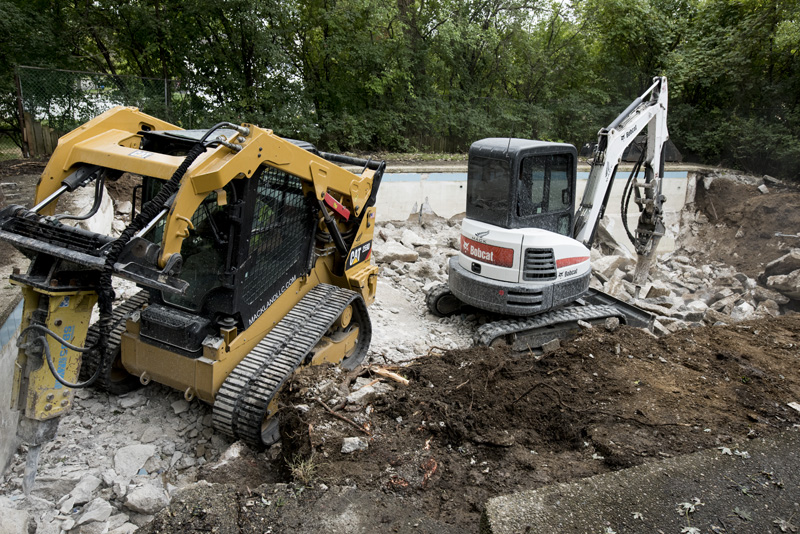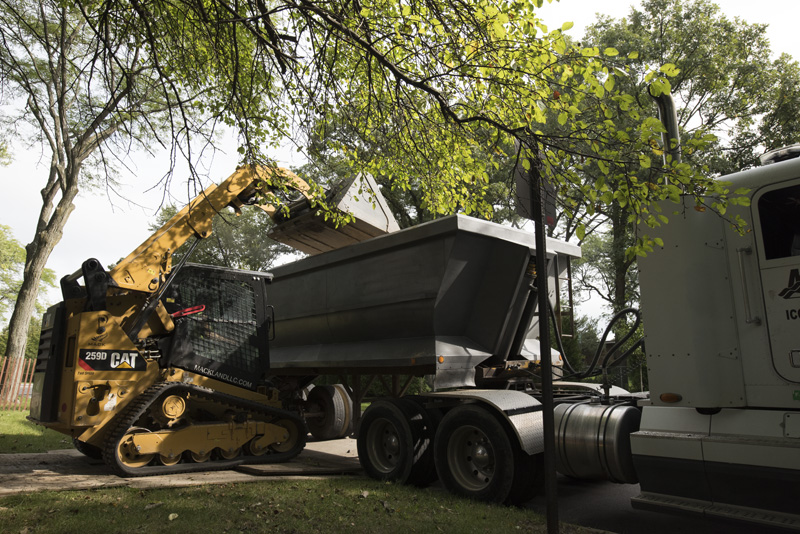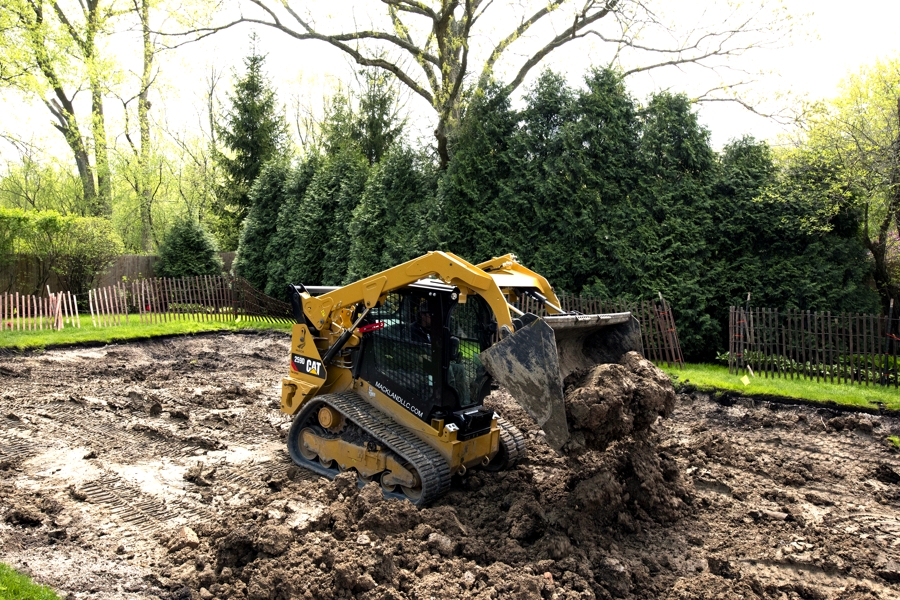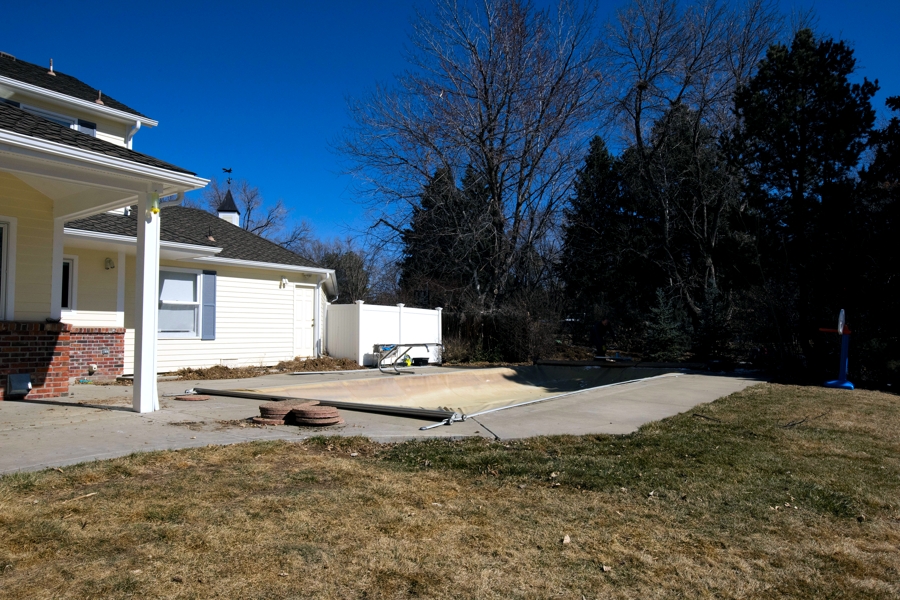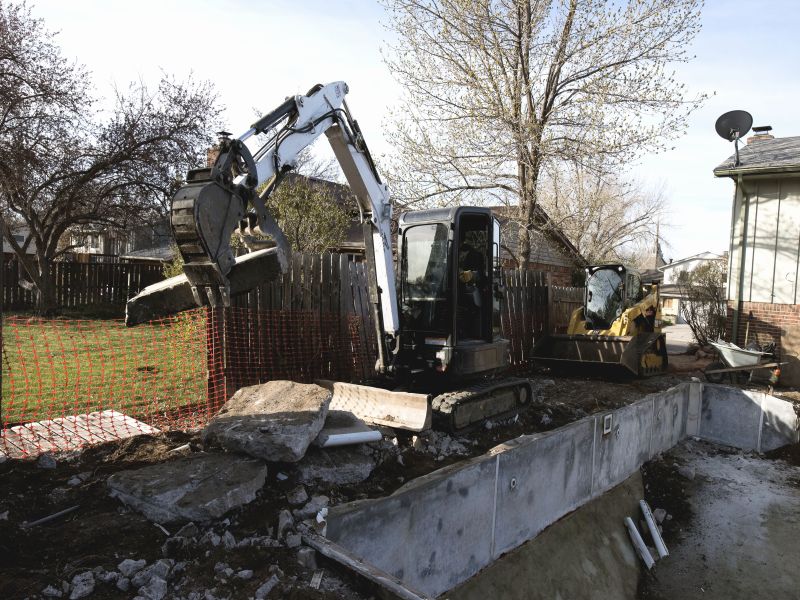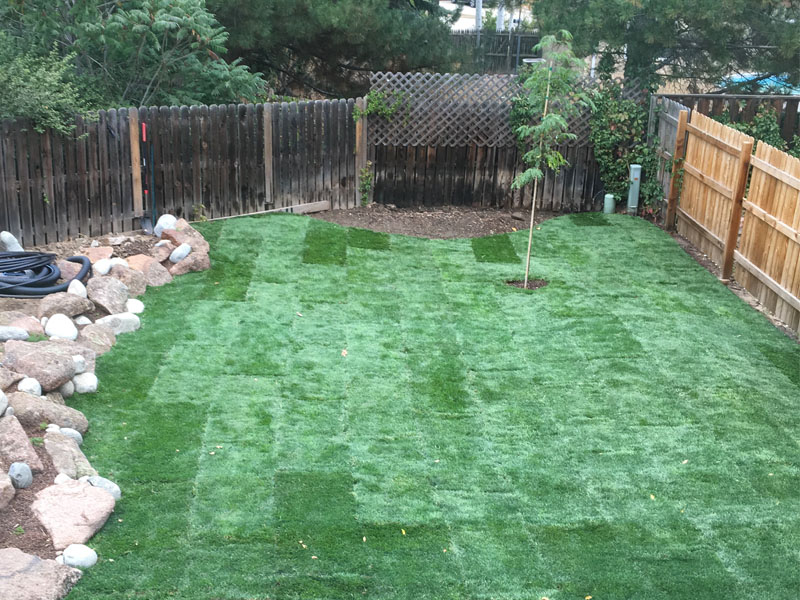Most of our pool removal requests come in from private homeowners. Yet sometimes we work directly with other contractors. With this project, we were contacted by Phase One Landscapes. Their client was looking to do a complete makeover of their back yard. This included removing the in-ground pool and pool deck that currently dominated the space. That’s where MackLand, LLC came in.
The pool at this property was a fiberglass shell surrounded by a concrete pool deck and patio. As with many Denver locations, the access and room to maneuver around the site was tight. Here our use of smaller compact equipment allowed us to get the job done without impacting the surrounding features. As with all our pool removal projects, we disconnected the pool equipment and capped the utilities properly. Once we drained the pool, we removed the fiberglass shell and disposed it offsite. Then we broke up and removed the entire concrete pool deck and patio.
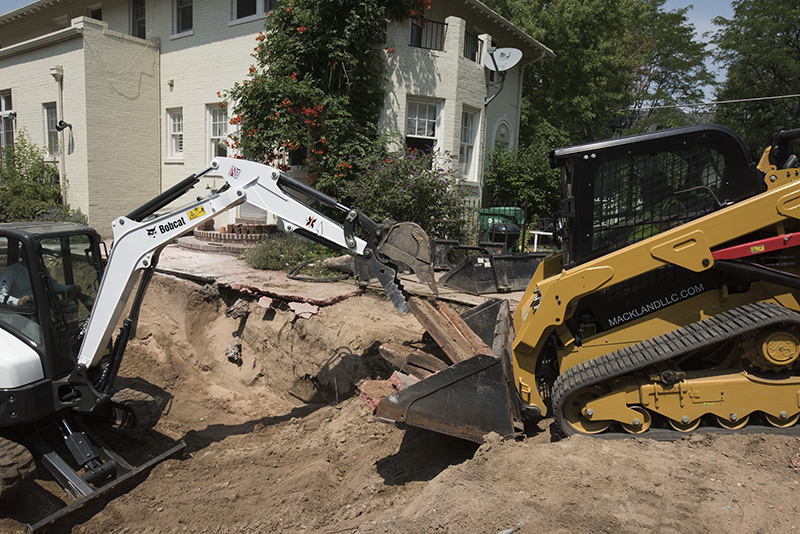
The new backyard plan included installing a new recycled brick paver patio over the pool area. This can be tricky, however, there are ways to backfill appropriately so it can be done. For this project, we backfilled with structural fill and compacted it in layers using a Sheep Foot Vibratory Compactor. With this process, we were able to firmly compact the base material, preparing it properly for the recycled brick paver installation to be completed by Phase One Landscapes.
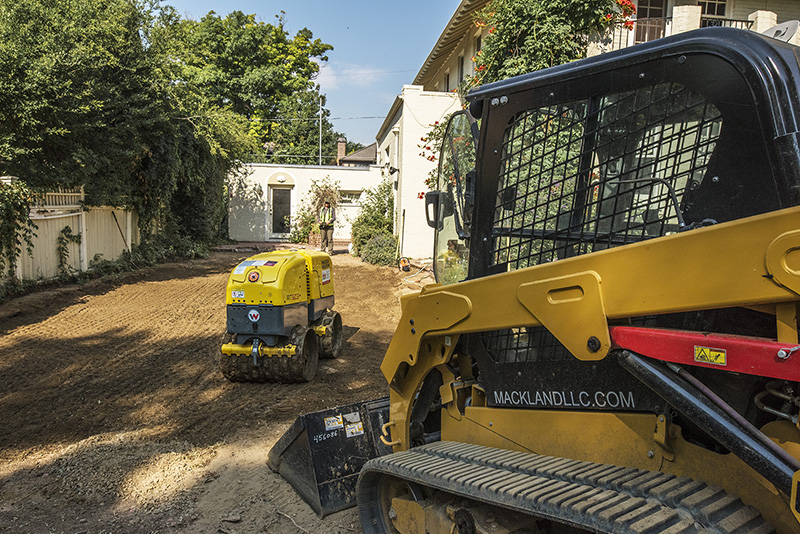
The backyard makeover went smoothly and everyone involved is happy with the outcome.
We have been specializing in removing pools for over 15 years and are experts in the field. If you live in the greater Denver or Chicago areas, please do not hesitate to contact us for a free consultation.






